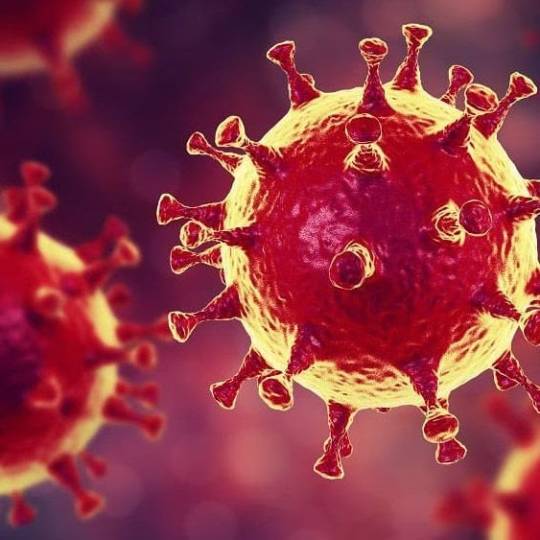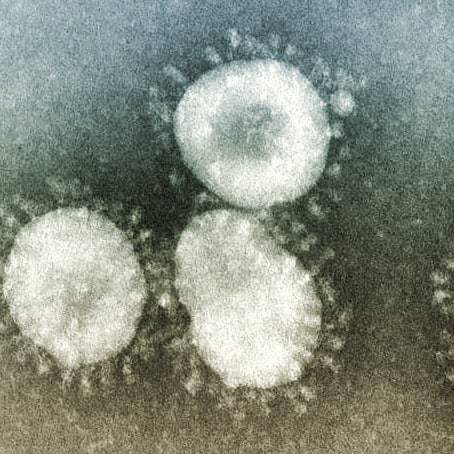Photo

at Inglês Método Coopling - Oficial https://www.instagram.com/p/CFoxQJWD5hN/?igshid=53hs5dfp7ngd
0 notes
Photo

at Rede Globo - São Paulo https://www.instagram.com/p/CFCv32xj7OC/?igshid=1kki39xlzo0hn
1 note
·
View note
Photo

Remember how it used to be When the sun would fill up the sky Remember how we used to feel Those days would never end Those days would never end Remember how it used to be When the stars would fill the sky Remember how we used to dream Those nights would never end Those nights would never end It was the sweetness of your skin It was the hope of all we might have been That fills me with the hope to wish Impossible things #reesewhiterspoon #littlefireseverywhere (at Shaker Heights, Ohio) https://www.instagram.com/p/CEP5xQqDbX3/?igshid=3gmi266j7646
0 notes
Photo

O ano letivo de seu filho não está perdido! Hoje nossa sexta-feira foi coroada com a alegria de Guilherme, um jovem de 14 anos que cuida dos irmãos pequenos com a ajuda de sua mãe. Conhecemos a história dele através da Conferencia de Pais (links abaixo) e do Clube do Papai e tivemos o prazer de fazer parte deste evento e poder presentear o Guilherme com nosso curso de Conversação. Parabéns, Guilherme! Em 2022 seu sonho de falar Inglês estará concretizando! https://conferenciadepais.com.br/ http://www.coopling.com.br/ https://clubedopapai.com/sobre-o-clube-do-papai/ https://www.instagram.com/clubedopapai/ https://www.instagram.com/maedeoutromundo/ https://www.instagram.com/sou_irmaomaisvelho/ @guinicolasouza @coopling @combasso Nossos calorosos agradecimentos vão para a iniciativa de todos os pais do ClubedoPapai e: Leandro Nigre - Papai Educa® (@Papaieduca) de Adamantina Marcos @papaibiligue- Pará Ageu quintanilha @papaidescomplicado - Minas Gerais #somospaisfelizes #amordepai #conferenciadepais #clubedopapai #novopaiassociado #coopling #idiomas #ingles #associativismo ♥️ (at Inglês Método Coopling - Oficial) https://www.instagram.com/p/CELBPIFD30b/?igshid=sp5gtyqg7ojn
#somospaisfelizes#amordepai#conferenciadepais#clubedopapai#novopaiassociado#coopling#idiomas#ingles#associativismo
0 notes
Photo

#nicknacks #memories #coopling #mariekondo https://www.instagram.com/p/CEExv7Zjpar/?igshid=3dfmhb50hfee
0 notes
Photo

Pensa num trem bão, uai so... (at São José do Rio Preto) https://www.instagram.com/p/CD9Jy7cDKG3/?igshid=1ssb3ya3cffvn
0 notes
Photo

Our classes will be optimized next week with the best OS and machine! Thanks to @tpdfabiocosta ! (at Inglês Método Coopling - Oficial) https://www.instagram.com/p/CD6qfgZDLMy/?igshid=15sbgwm4b0spi
0 notes
Photo

The virus that causes Middle East respiratory syndrome, or MERS, sparked an outbreak in Saudi Arabia in 2012 and another in South Korea in 2015. The MERS virus belongs to the same family of viruses as SARS-CoV and SARS-CoV-2, and likely originated in bats, as well. The disease infected camels before passing into humans and triggers fever, coughing and shortness of breath in infected people. MERS often progresses to severe pneumonia and has an estimated mortality rate between 30% and 40%, making it the most lethal of the known coronaviruses that jumped from animals to people. As with SARS-CoV and SARS-CoV-2, MERS has no approved treatments or vaccine. (at UFMG - Universidade Federal de Minas Gerais) https://www.instagram.com/p/CDOwRROjOSo/?igshid=1lti3x8ysfwql
0 notes
Photo

The virus that causes severe acute respiratory syndrome, or SARS, first appeared in 2002 in the Guangdong province of southern China, according to the WHO. The virus likely emerged in bats, initially, then hopped into nocturnal mammals called civets before finally infecting humans. After triggering an outbreak in China, SARS spread to 26 countries around the world, infecting more than 8000 people and killing more than 770 over the course of two years. The disease causes fever, chills and body aches, and often progresses to pneumonia, a severe condition in which the lungs become inflamed and fill with pus. SARS has an estimated mortality rate of 9.6%, and as of yet, has no approved treatment or vaccine. However, no new cases of SARS have been reported since the early 2000s, according to the CDC. (at Universidade Estácio De Sá) https://www.instagram.com/p/CDOvZ7MjlyI/?igshid=clzsoojolswz
0 notes
Photo

Two vaccines are now available to protect children from rotavirus, the leading cause of severe diarrheal illness among babies and young children. The virus can spread rapidly, through what researchers call the fecal-oral route (meaning that small particles of feces end up being consumed). Although children in the developed world rarely die from rotavirus infection, the disease is a killer in the developing world, where rehydration treatments are not widely available. The WHO estimates that worldwide, 453,000 children younger than age 5 died from rotavirus infection in 2008. But countries that have introduced the vaccine have reported sharp declines in rotavirus hospitalizations and deaths. (at UFSC) https://www.instagram.com/p/CDOvGYVjOhi/?igshid=1dnoqnt0t296k
0 notes
Photo

Dengue virus first appeared in the 1950s in the Philippines and Thailand, and has since spread throughout the tropical and subtropical regions of the globe. Up to 40% of the world's population now lives in areas where dengue is endemic, and the disease — with the mosquitoes that carry it — is likely to spread farther as the world warms. Dengue sickens 50 to 100 million people a year, according to WHO. Although the mortality rate for dengue fever is lower than some other viruses, at 2.5%, the virus can cause an Ebola-like disease called dengue hemorrhagic fever, and that condition has a mortality rate of 20% if left untreated. (at Fundação Oswaldo Cruz (Fiocruz)) https://www.instagram.com/p/CDOurk2DPHr/?igshid=1ctrxhholo5z1
0 notes
Photo

INFLUENZA a.k.a. Flu. During a typical flu season, up to 500,000 people worldwide will die from the illness, according to WHO. But occasionally, when a new flu strain emerges, a pandemic results with a faster spread of disease and, often, higher mortality rates. The most deadly flu pandemic, sometimes called the Spanish flu, began in 1918 and sickened up to 40% of the world's population, killing an estimated 50 million people. (at UFBA) https://www.instagram.com/p/CDOubdyDHEn/?igshid=80gsn85s8u7h
0 notes
Photo

Hantavirus pulmonary syndrome (HPS) first gained wide attention in the U.S. in 1993, when a healthy, young Navajo man and his fiancée living in the Four Corners area of the United States died within days of developing shortness of breath. A few months later, health authorities isolated hantavirus from a deer mouse living in the home of one of the infected people. More than 600 people in the U.S. have now contracted HPS, and 36% have died from the disease, according to the Centers for Disease Control and Prevention. (at USP - Campus São Carlos) https://www.instagram.com/p/CDOuIcZDGyU/?igshid=7lba14uti7bq
0 notes
Photo

In 1980, the World Health Assembly declared the world free of smallpox. But before that, humans battled smallpox for thousands of years, and the disease killed about 1 in 3 of those it infected. It left survivors with deep, permanent scars and, often, blindness. Mortality rates were far higher in populations outside of Europe, where people had little contact with the virus before visitors brought it to their regions. For example, historians estimate 90% of the native population of the Americas died from smallpox introduced by European explorers. In the 20th century alone, smallpox killed 300 million people. (at Universidade Federal de São Carlos - UFSCar) https://www.instagram.com/p/CDOt4TLjhNE/?igshid=di95dfo2bbz4
0 notes
Photo

In the modern world, the deadliest virus of all may be HIV. "It is still the one that is the biggest killer," said Dr. Amesh Adalja, an infectious disease physician and spokesman for the Infectious Disease Society of America. An estimated 32 million people have died from HIV since the disease was first recognized in the early 1980s. "The infectious disease that takes the biggest toll on mankind right now is HIV," Adalja said. (at Unicamp - Universidade Estadual de Campinas) https://www.instagram.com/p/CDOtmI3jof-/?igshid=d192c1bf7oq6
0 notes
Photo

Although rabies vaccines for pets, which were introduced in the 1920s, have helped make the disease exceedingly rare in the developed world, this condition remains a serious problem in India and parts of Africa. "It destroys the brain, it's a really, really bad disease," Muhlberger said. "We have a vaccine against rabies, and we have antibodies that work against rabies, so if someone gets bitten by a rabid animal we can treat this person," she said. (at Instituto Butantan) https://www.instagram.com/p/CDOtWd0jz4t/?igshid=1x127g1hxbnt5
0 notes